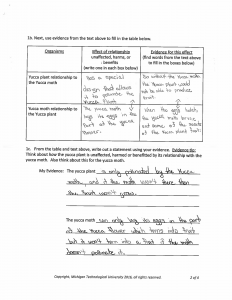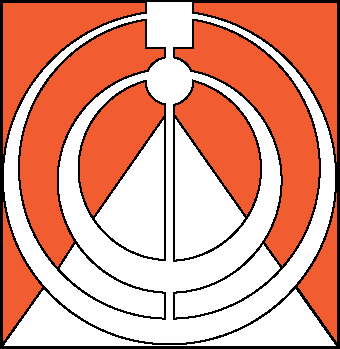Beyond Grades: Assessment and Mi-STAR
Sunday, February 3, 2019
By Barb McIntyre, retired science teacher
Editor's note: Barb McIntyre is a member of the Mi-STAR Assessment Team, which also includes Brian Gane, a faculty member in the University of Illinois-Chicago's Learning Sciences Research Institute and a national expert on NGSS assessment; and team chair Chris Wojick, the Mi-STAR project director.
Teachers who are new to Mi-STAR always have lots of questions about assessment, which is no surprise. Just mastering the curriculum involves a steep learning curve, and assessment seems to be yet another task on our to-do list. Nevertheless, assessment is an integral part of Mi-STAR, and it's absolutely critical for a number of reasons.
First, we all have to account for our students' progress, and assessment measures their growth and can be used to determine grades. Second, it's our best way of getting into our students' brains to find out about their knowledge, skills, and abilities. Assessment helps us infer what our students do and don't understand, so it guides our instruction.
Lastly, assessment can help to prepare students for high-stakes testing, M-STEP in particular. Mi-STAR's assessment team has been very intentional about being in sync with the state. The M-STEP science test for eighth graders uses an integrated, three-dimensional approach that is designed for NGSS, and our assessments ask students questions that are very similar to test questions released by the state.
Opportunities for assessment in Mi-STAR units include Pre/Post Assessments, Check Your Progress phases, Embedded Assessments, and Unit Challenge tasks.
Pre/Post Assessments
Mi-STAR's Pre/Post Assessments are comprehensive tests given before and after each unit and include answer keys. Each Pre/Post Assessment includes three-dimensional assessment of the primary performance expectations assigned to the unit.The Pre/Post not only measures what students know and can do at the end of the unit, it also measures their progress, which is the true gauge of learning.
Check Your Progress
The Check Your Progress phase can also give teachers an opportunity to assess student learning, skills, and abilities related to the key concepts of the lesson. Most Check Your Progress phase assessments are intended to be used as formative assessment, although in many lessons, teachers could use Check Your Progress as a grading opportunity. Often, Check Your Progress presents a new context for teachers to assess student proficiency, so the content of the CYP phase is related to, but not exactly the same as, the Uncover/Share or Connect Phase of the lesson.
Embedded Assessment
Embedded Assessments are used in the Check Your Progress phase at key points in each unit. Each has either an answer key—used when the answers are straightforward—or a leveling rubric, in which students score from Level 1 to Level 4, in half-point increments. Level 3 is standard but not fully proficient, while 4 is fully proficient. The rubric lists specific things for teachers to look for in scoring, and most students achieve between 2 and 4. The rubric is flexible; sometimes a student is almost—but not quite—at Level 4, and teachers have the option of giving, for example, a Level 3.8. Teachers can determine how the embedded assessments will be used and scored to meet the needs of their students. Rubrics and leveling suggestions are meant to guide teachers and can be modified as needed for individual teachers and classroom dynamics.
Embedded Assessments differ from conventional quizzes, which tend to be heavy on vocabulary and ask students to learn facts and then regurgitate them. Mi-STAR assessments often ask students to apply their learning in a new way, by integrating the science and engineering practices and cross cutting concepts, as well as the disciplinary core content. The rubrics provide scoring guidance based on the rigor of each item and the overall quality of the answer, including how well students construct their explanations and demonstrate evidence-based reasoning. There are few simple right or wrong answers. Instead, we ask teachers to score the assessments holistically based on where a student falls in the continuum of proficiency. For instance, a conventional test might ask the student to define mutualism and interdependence in an ecosystem. Instead, Mi-STAR describes an unfamiliar scenario, the relationship between the yucca plant and the yucca moth, and then asks the student to predict what would happen to the moths if mule deer begin eating the yucca plants. Even without remembering the words "mutualism" or "interdependence," students can demonstrate deep learning of the concept and score at a high level.
Unit Challenge
Unit Challenge student products are also artifacts that could be used by teachers for assessment, although, like most group work, it primarily tells teachers about the effort of just a few students on the team. Instead of being primarily useful for assessment, the Unit Challenge plays a different, but valuable, role in student learning
First, it gives students a reason to care, and learning for a purpose is a much more powerful motivator than a simple grade. Secondly, it requires students to work together as a community: building on each other's strengths, respectfully disagreeing, and working together toward a common goal. All of those skills are important, not just for careers in science and engineering but for any cooperative endeavor.
That said, the Challenge does provide opportunities for assessment, especially when students are working on their projects. That's a good time for teachers to walk around and listen to student interactions in order to identify students who are excelling or require additional support or instruction. Student talk often reveals lingering student misconceptions and offers teachers an opportunity to determine how best to address those concepts.
Assessment and Grading
While Mi-STAR assessments do not set grades, teachers usually use them as part of the grading process. Teachers are encouraged to use their professional judgment to determine the grades that correspond to each level based on their holistic evaluation of student responses to the Pre/Post, Check Your Progress, Embedded Assessment or Unit Challenge items. Scoring student responses—and the corresponding grades—may vary from teacher to teacher based on factors such as the rigor of the assessment or student experience with 3D learning and assessment. For example, one teacher may assign a grade of 90 percent to a level 3 Embedded Assessment score if students are new to 3D learning and assessment or if the assessment seems particularly rigorous. Another teacher may assign a grade of 80 percent to the same level 3 score. There isn't a single correct way to score and grade Embedded Assessments; rather, teachers may consider a variety of factors when evaluating student work.
Once teachers understand Mi-STAR assessment, their next challenge is to explain it to those who thrived with the old curriculum: straight-A students and their parents. For a grade-motivated student accustomed to cramming for tests and regurgitating facts, Mi-STAR assessment can be challenging. Students—and their parents—expect to spend a significant amount of time preparing for assessments. I tell students that the best thing they can do to prepare for success on Mi-STAR assessments is to get engaged and involved in class work, and Mi-STAR makes that easy. The good news is that these Type A kids quickly adapt and realize they don't have to rely on memorizing facts. It's fun to watch them learn to trust themselves and love learning instead of just focusing on a grade on a test.
On the other hand, teachers also tell us that Mi-STAR assessment is proving to be great for at-risk learners, who usually don't study outside of class. That's because Mi-STAR measures deep learning as opposed to facts memorized for the test. In addition, these students often struggle with reading and comprehension, and too often conventional tests are de facto reading tests. Teachers always have the option to read difficult portions of Mi-STAR assessments aloud to students to minimize the reliance on reading for success. That said, we have tried to create assessments that reflect the level and type of reading students will experience on state mandated assessments such as M-STEP. Mi-STAR teachers have told us that at-risk students often score lower than other students on the pre-test, but their post-test scores are comparable to the post-test scores attained by honors students.
Even though Mi-STAR has plenty of assessment tools, the Assessment Team is working to incorporate more assessment opportunities. Like all of the staff, we are always working to make Mi-STAR better.
GET Mi-STAR NEWS BY E-MAIL!
Copyright © 2025 Mi-STAR
Mi-STAR was founded in 2015 through generous support provided by the Herbert H. and Grace A. Dow Foundation. Mi-STAR has also received substantial support from the National Science Foundation, the MiSTEM Advisory Council through the Michigan Department of Education, and Michigan Technological University.



















